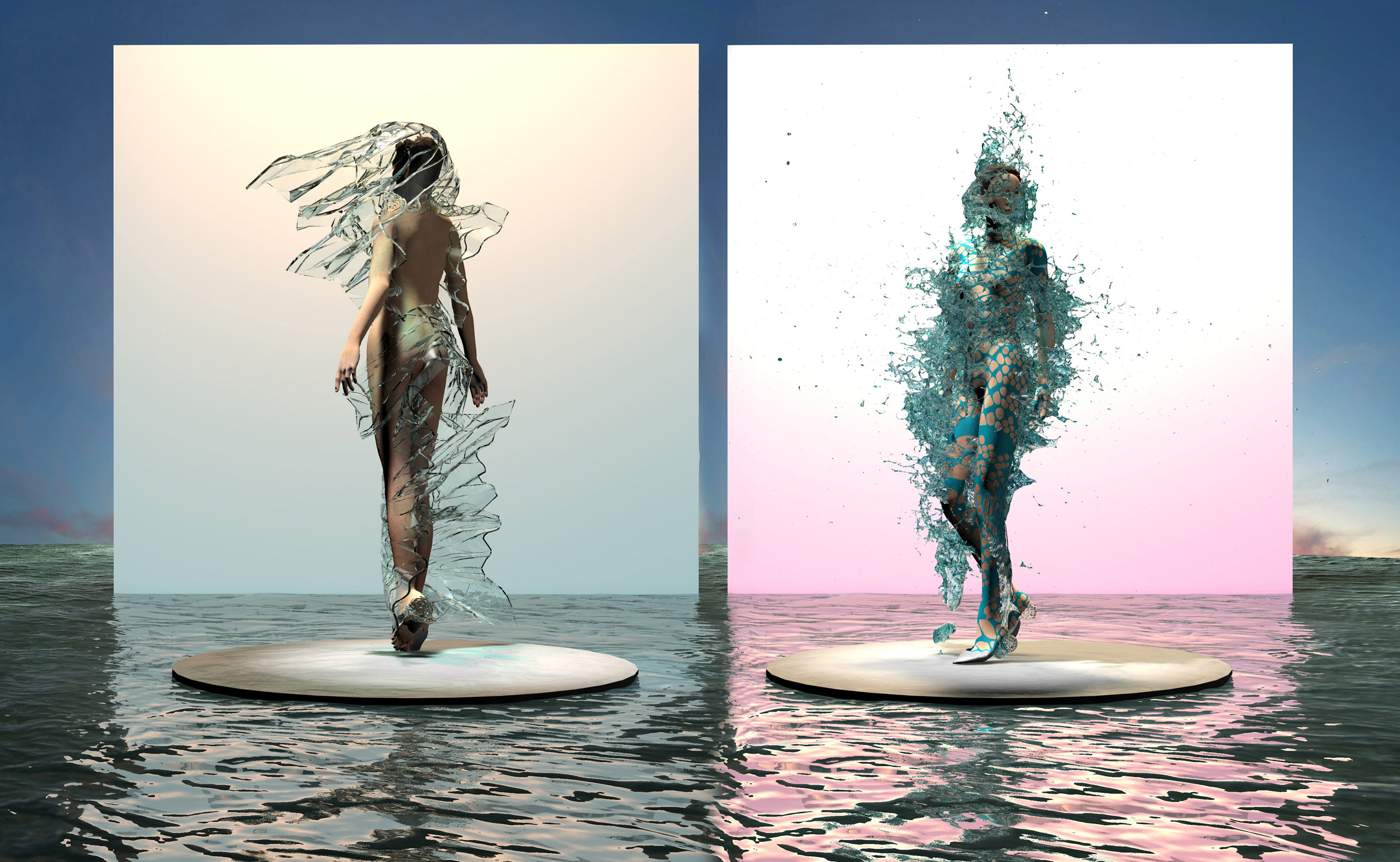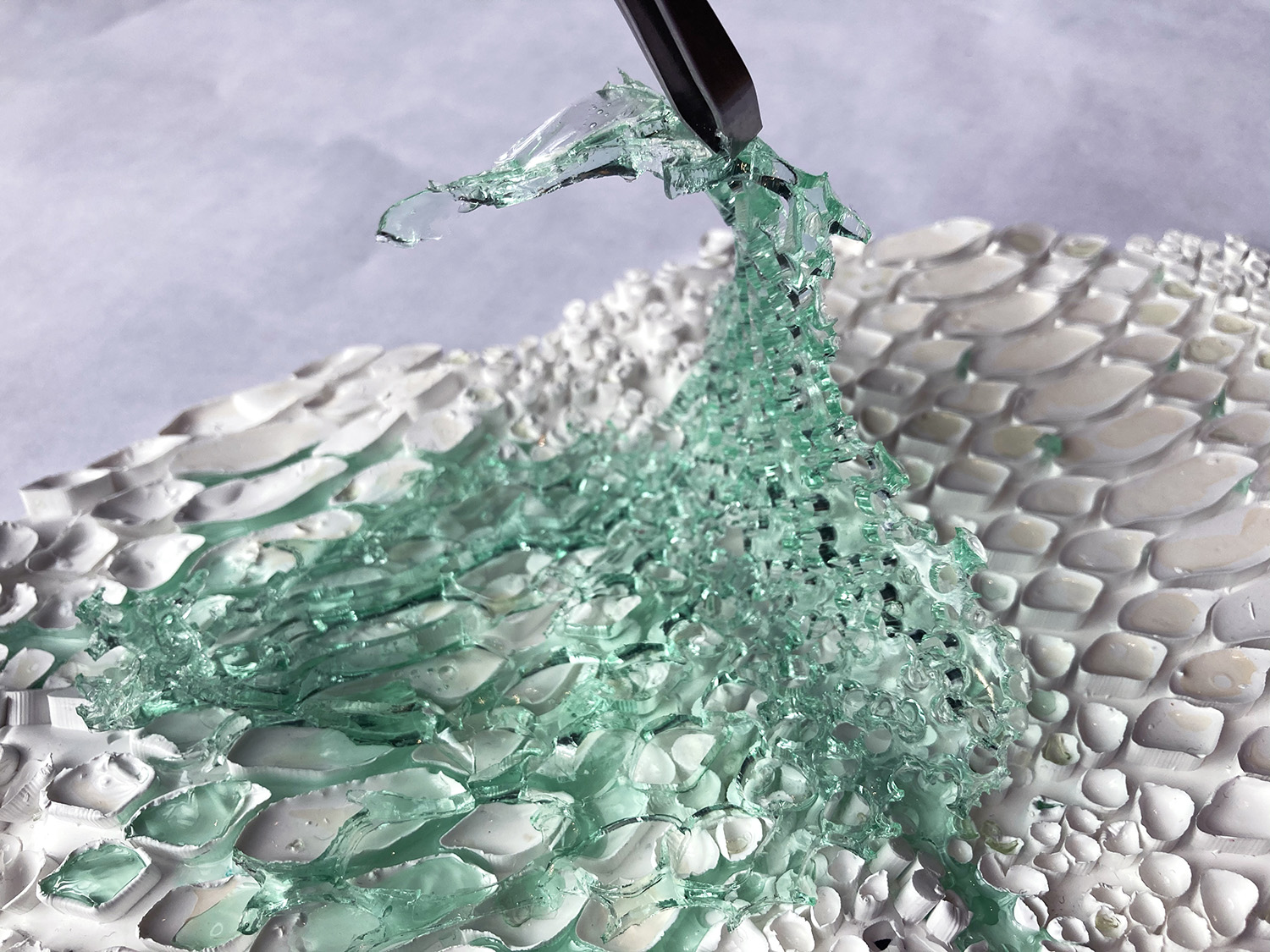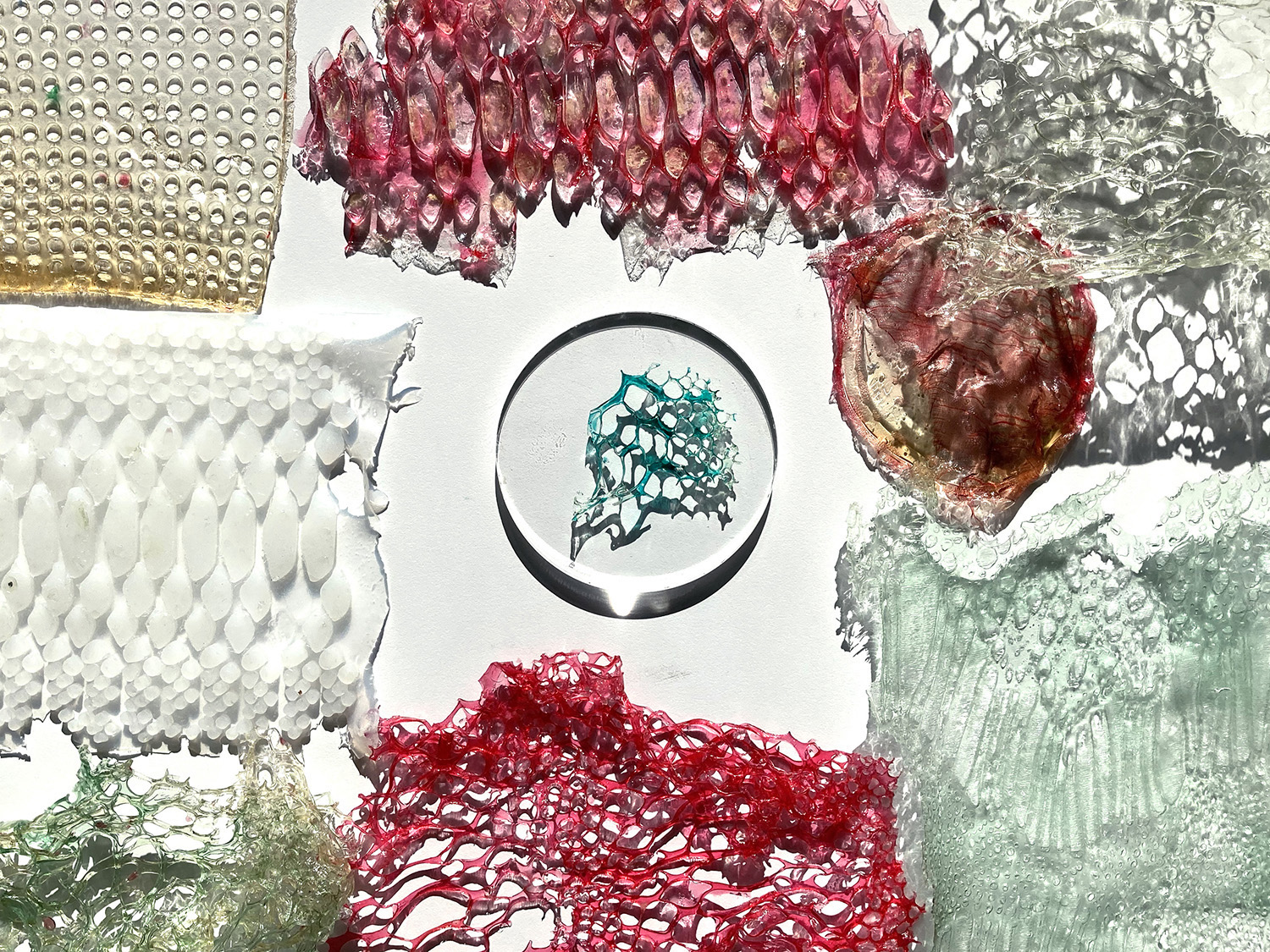3D technology has slowly filtered itself into manufacturing industries throughout the years but, has anyone ever used 3D technology to create a fully biodegradable textile to minimize waste and oppose the fashion industry’s unsustainable nature? Well, Scarlett Yang has. Through her project ‘Decomposition of Materiality’, Yang has created a simulated ecosystem so that even if the garment vanishes in the real world, it’ll be forever kept in the digital one.
We sat down with Yang to chat about the project, her international background and the future of fashion.
REPORTS
Making Fashion Sustainable Through Biodegradable Textiles: Q&A With YouFab 2020 Winner Scarlett Yang

What made you interested in fashion in the first place?
I grew up in Hong Kong and parts of China close to Hong Kong. My background is quite international, and I was also exposed to different cultures when I went to an international school. So, growing up, I started to really appreciate the fluidity between different cultures.
When I was younger, I was also strongly encouraged to really provoke the current system, not just through fashion, but in general, to really question and criticize and to propose.
While I was doing my fashion degree at Central Saint Martins in London, we had this one year in the industry, when I went to Amsterdam in the Netherlands to work in an innovative design lab for five months. There, I discovered that there are so many things that are actually possible like biomaterials and digital fabrications. So I started to combine it with fashion, textiles and other things like VR and AR.
That got me very interested in problem solving in a society and developing innovative solutions. Studying at the Royal College of Arts was a continuation of my exploration in this direction, and really questioning – what is innovation? How does it create value to society? To who and how? And how am I going to make sure it really works?

Did your experiences inspire you to come to Japan?
During my time in the Netherlands, I was in the WaagSociety, which is a Fab Lab. I discovered that the Fab Lab community was all over the world. I started looking up the kinds of opportunities they had in all the different locations. And then I came across KIT(KYOTO Design Lab, Kyoto Institute of Technology). It was really nice, because as an outsider of industrial design and mechanical engineering, which I don’t do any of, I was able to go in and actually try and learn digital fabrication, 3D printing and more, which was really fascinating to me.
What have you found interesting or different about fashion, sustainability and technology in Japan?
The Japanese view of fashion is quite fascinating. I wore a kimono in Kyoto and trained in traditional Japanese kabuki dancing for a few months. But this is super separate from the modern, contemporary fashion of Japan. Fashion designers in Japan especially, combine the old and new, which I was really, really into. Unreal. It was really inspiring for me in terms of combining this technological geometry and the techniques with fashion. It was just blowing my mind.

What are some key moments that specifically inspired you to work on “Decomposition of Materiality”?
As students at CSM in the studio, cutting fabric, making beautiful garments and prototyping, we would cut out the shape we want for the garment and just throw out the rest, which is a huge waste. And there’s no way around it. In the UK, it’s not recyclable, so you have to throw it in the bin. It was something that I saw everyday.
And also the machinery, the sewing machines. The industrial sewing machines that students, professionals and designers use have not changed over the past few decades – not even centuries. It’s an electronic sewing machine, but it’s still a sewing machine. It’s still quite manual and requires labor. This was also a trigger. There was a particular incident in Bangladesh withThe Rana Plaza collapse. That really left a scar on me. People actually died producing fast fashion.
I started to ask myself a really ethical question. Do I keep doing the same thing every day and pretend that these things aren’t happening? Or do I want to innovate to see if this is an outsource problem? Do we decentralize? Or is it the fabrication, or the method of manufacturing, or the machinery that we need to advance further? Or do we train workers or move to digitalization to prevent tragedies from happening again?
What are you trying to narrate through these materials, and why do you think materials matter? Why is it important to consider?
When I was starting this project, especially after my time in Amsterdam, I started to think that materiality is the most important thing. What is the true foundation of any design? Of any physical object? Especially in the case of fashion, it’s the material., So, this became the first priority.
Now, with all the technology and digital software, it’s actually possible to focus on an alternative material, you can design the material itself from bits, and then use a 3D printer or laser to engineer the properties, the softness and the shape around it.n traditional processes, people would say, “Okay, I want this shape. I want this particular silhouette, this style, and then I’ll find a material to make it, and then that’s when the waste begins. But, what if we think of the material first? And then, we accommodate it with technology, which is very versatile and, actually, very possible.
The starting point for my work is material and its abundance, and the fabrication system around it. Currently, I am collaborating with virtuality experts to see how we can digitize a texture, not just by scanning and not just on a visual level. Material is not just visual, it is tactile – it has sound when you crush it, and it isa whole sensation. So if we want to make a virtual experience for people to experience material, the nature and the character of it, it has to be virtualized and digitized in a more complex way.

What do you feel are some possibilities in design and fashion? What can you do for the people and for the fashion industry tomorrow, short term and long term?
One thing that I think is super important is that I am just one person. I need people to collaborate with who have different perspectives and skill sets to tackle the problem together, to be more efficient. I also think the fashion industry is super fragmented right now. Everyone’s doing their own little bit and trying to gain profit. I think there should be a system that changes how we promote fashion. So I want to do more; if we bridge over to other disciplines, if we collaborate with other people who listen, who can offer different opinions, then we can probably come up with something new. Something that’s safe and for the social good.
With the theme “Contactless [by default]”, how do you think COVID will influence what you do next? And how do you approach your work from now on?
For now, the bio labs are closed so I’ve paused the material and research for a while and am focusing more on the design strategy and the commercialization. For now, my main focus is on digital, to see how we can not digitize everything in physical life but how we can really enhance, and really, really maximize, the benefits we get out of digital technology. I feel like open-mindedness is going to be even more important in this COVID age. As we’re all stuck wherever we are, it’s really important to keep your mind open and just try to feel like you’re somewhere else, and try to collaborate as much as you can online.
Is there a goal that you personally want to achieve in digitization and fashion?
This is too greedy but if we managed to have really improved 4D printing technology, then you can print, for example, a whole Garmin in a split of a second, right? Then you can scale it up. It’s not just doing one forever. And it’s flexible, customizable, and it’s quick, this customization interaction.
Another goal would be virtual fashion. If we can create something – a virtual textile, a virtual cloth, clothing simulation could be super precise and quick, quick enough that it’s real time, like if you’re just taking a selfie and your virtual clothes are moving with you, moving super realistically, and you can change color and style any time.
I’m also interested in nanomaterials, which would require collaborating with scientists. For now, I think what I do is still on a very macro level. So in the texture we made with digital fabrication, for example, laser cutting and 3D printing, the cuts and the holes you drill are still visible to the eye. What if you can do something on a nanoscale thatcompletely changes the whole texture of the material? That would be magical.
What do you hope people will take from your work?
I’d be open and maybe learn from other people and try to communicate. Then try to collaborate to see how we can contribute to each other’s ideas. Also support each other. Whatever the resource you have, it might be a lifesaver for other people.




